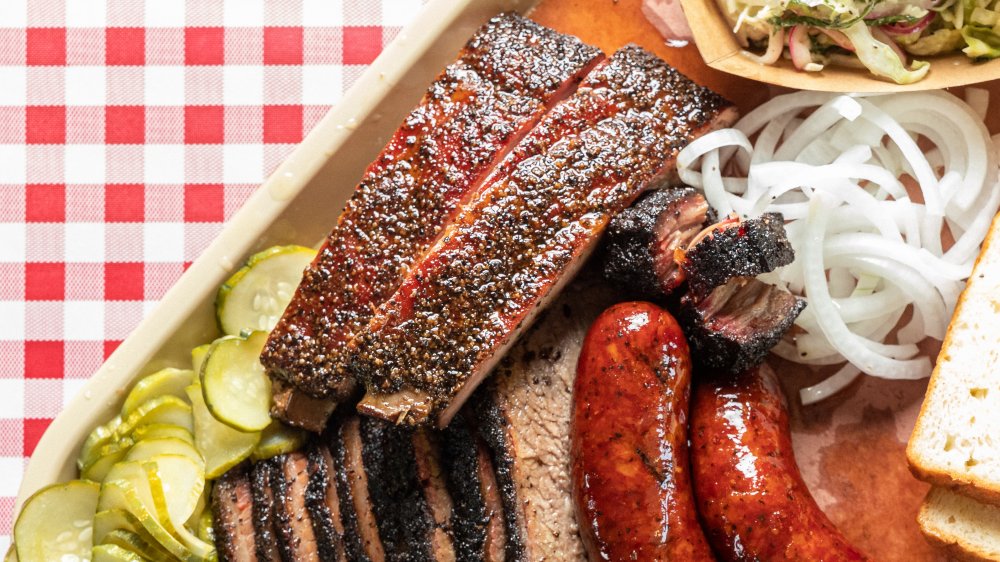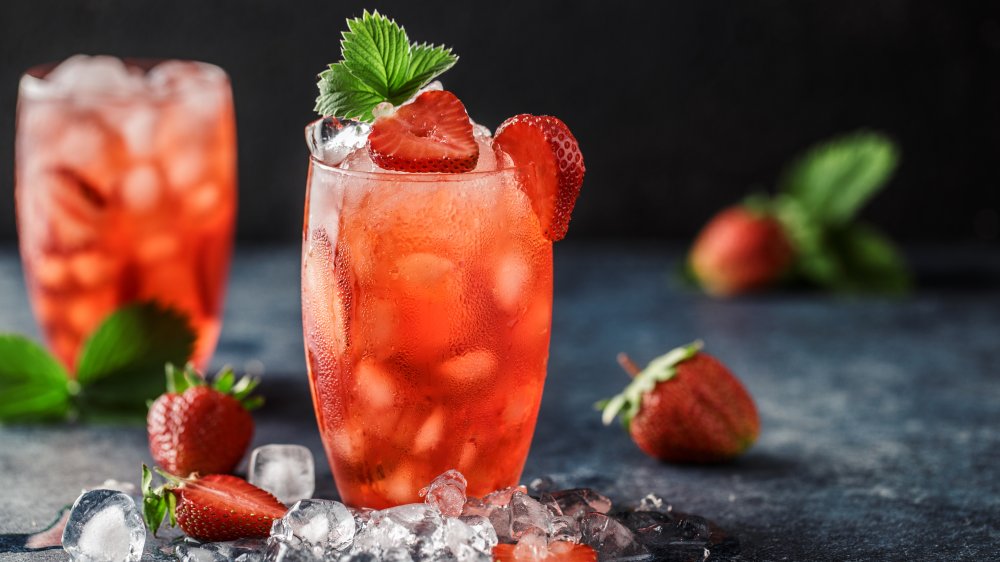Why Red Foods Became A Juneteenth Tradition
Toss the textbooks aside. Food is one of the most telling writers of history. And that's no exception when it comes to Juneteenth. The holiday commemorates the day enslaved Black Americans in Galveston, Texas discovered they were free. Slaveowners in Texas had refused to acknowledge the Emancipation Proclamation — for two and a half years (via The New York Times).
In the 150-plus years since, Black Americans have celebrated the official ending to slavery on June 19. And for decades, Black chefs throughout the country have taken traditional foods — hot links, watermelon, cornbread — and crafted countless variations (via The New York Times).
Take chef and Top Chef contestant Carla Hall, who pickles red onions with habanero peppers and tosses them into a seasoned, mint-garnished watermelon salad (via Saveur). Or Chris Williams, a Houston-based chef who served catfish over grits with red eye gravy at the James Beard House last June. And the legacy of innovative food is a long one: Williams' great-grandmother, a trail-blazing Austin chef named Lucille Smith, had developed a trademark cheese-topped chili biscuit, which Williams still serves today with fiery harissa sauce (via HuffPost).
But despite the variety, a common theme floats throughout many Juneteenth spreads: the color red.
Juneteenth and the color red
Why red? According to Atlas Obscura, the tradition likely stretches far past the 19th century, and across the Atlantic Ocean. For centuries, hibiscus flowers have served as a base for teas in West Africa. It was also customary to chew the caffeine-filled kola nut or drink it infused with water, according to historian Adrian Miller. "So people would often make drinks using the nuts or the flower petals to color the drink or sweeten it to taste," Miller explains (via WBUR). The result? Red-tinted drinks. And according to Fred Opie, a history professor at Babson College, red could also be traced back to Yoruba and Asante celebrations that involved "offering up the blood of animals."
Red foods and beverages are staples of the commemorative day in June: from Big Red, a sweet cream soda native to Texas, to red velvet cakes and strawberry pies. It doesn't end there, though — you can often find crimson-dyed hot links, strawberry soda, watermelon, hot sauce, and hibiscus tea at Juneteenth celebrations, according to Nicole Taylor, who's been covering Juneteenth with The New York Times for years.
But according to Taylor, red also symbolizes generations of suffering and perseverance, and writes that it's "a symbol of ingenuity and resilience in bondage." As celebrations sweep across the country and tables fill with food, chefs and home cooks alike are continuing to preserve history.

